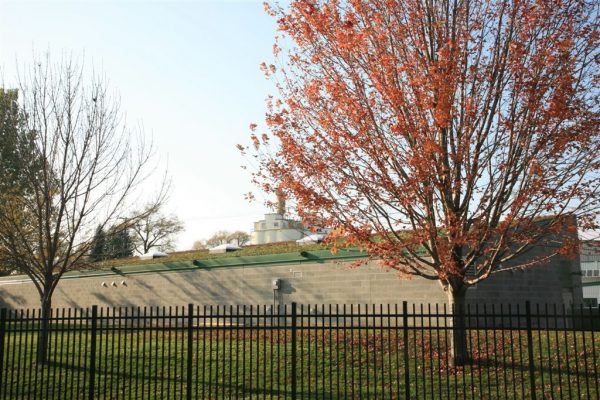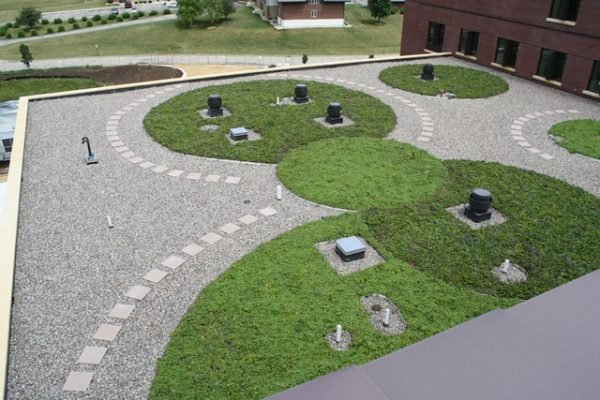LiveRoof Brand Green Roofs Can Help You Earn LEED Points
LEED®, or Leadership in Energy and Environmental Design, is a green building rating system developed by the U.S. Green Building Council (USGBC). The intent is to provide a standard certification process that promotes five key areas of human and environmental health, and it provides a roadmap to measuring and documenting success for every building type and phase of building lifecycle. To receive LEED certification, building projects meet defined prerequisites and earn points by attempting a variety of credits.
Our advanced, proven living roof system can help you earn LEED points in several credit categories – above and beyond that of just any green roof system. LiveRoof green roofs have been used on dozens of LEED certified projects.
Our products contribute to stormwater control, provide habitat for wildlife, mitigate heat island effect, reduce cooling loads, and provide many other benefits. Below is a comprehensive list of the credits from LEEDv4 BD+C Rating System that can be influenced by the LiveRoof system. Other Rating Systems, including O+M, ID+C and HOMES may be applicable.
LiveRoof system’s contribution toward LEED points depends on the size of the green roof and the degree to which the various features described above are incorporated into the overall building design.
SUSTAINABLE SITES
Protect or Restore Habitat and Maximize Open Space
If you think about it, wherever there is a building, there once was some type of vegetation. Green roofs help to reclaim green space, and in the process they provide habitat (for songbirds, butterflies and a host of other invertebrate species) therefore helping to promote biodiversity.
Potential Contribution:
- Site Development – Protect or Restore Habitat
- Open Space
Storm Water Design
In conjunction with green infrastructure and low-impact development rainwater management techniques, LiveRoof systems help to reduce excess storm water discharge through evapotranspiration, periods of longer infiltration, or capture and reuse. They also help to filter and detoxify storm water by removing suspended solids and other pollutants.
Potential Contribution:
- Rainwater Management
Heat Island Effect
Typically used on roofs and sometimes at grade, LiveRoof significantly reduces roof temperatures during the summer months and the LEED Reference Guide identified green roofs as a means of mitigating the urban heat island effect. For LEEDv4 projects, vegetated roofs and high-reflectance roofs now have equal weight when calculating compliance.
Potential Contribution:
- Heat Island Reduction
WATER EFFICIENCY
Water-Efficient Landscaping
When vegetated with drought resistant LiveRoof plants, LiveRoof installations require little irrigation. In comparison to conventional plant material, LiveRoof plants require significantly less than 50% of typical irrigation, and in some climates can thrive with little or no supplemental irrigation. Additionally, the LiveRoof growing medium acts as a sponge to collect, feed the vegetation, evaporate and filter excess rainwater. In heavy rains, of course, runoff will occur and this can be channeled into a cistern for reuse on the LiveRoof, to a rain garden, or to parts of the ground-level landscape. Effective uses of such collected water reduce the overall potable water needed for site irrigation.
Potential Contribution:
- Outdoor Water Use Reduction
ENERGY & ATMOSPHERE
Optimize Energy Performance
The LiveRoof system offers potential energy savings benefits. The precise benefits will vary with climate. For example, in the northern temperate zone the savings of energy expended on air conditioning is expected to exceed 25 percent on single story structures. In warmer climates, the energy savings period will last for a longer percentage of the year. In either case, the exact savings is based upon building type, site, exposure, atmospheric conditions, and moisture content of the LiveRoof soil. Fore LEEDv4 projects, every avenue of savings will assist project teams in meeting the ultimately more stringent ASHRAE 90.1 – 2010 requirements.
During the winter, because the green roof soil is relatively moist, the LiveRoof Standard System (4.25″ soil depth) will have an R-value of approximately 1.9.
Potential Contribution:
- Optimize Energy Performance
MATERIALS & RESOURCES
Building product transparency has started to become the norm in the green building industry, and LEED is no exception. What once rewarded projects using single environmental attributes (e.g. recycled content, certified wood, etc.), now requires project teams to choose strategies and materials/products that have multiple attributes whenever possible. In order to fulfill this task, the market has moved toward a Life Cycle Assessment (LCA) approach.
Construction Waste Management
LiveRoof modules are delivered on reusable Hoppit racks, so no pallet or cardboard must be disposed of as required by many other green roof systems. Your LiveRoof® grower is happy to take back the removed soil elevators from the job site and recycle them. The installer need only bag them and send them back with the truck driver.
Potential Contribution:
- Construction and Demolition Waste Management (prerequisite)
- Building Life-Cycle Impact Reduction (credit)
Recycled Content
LiveRoof modules are composed of 100 % recycled polypropylene (avg. 10% post consumer, 90% post industrial), and in many cases the LiveRoof soil contains recycled materials such as compost or reclaimed mineral aggregate (must be verified by local LiveRoof licensed grower). By using recycled plastic and reclaimed components, LiveRoof helps to make good use of resources that otherwise might go to a landfill.
Potential Contribution:
- Building Product Disclosure and Optimization – Sourcing of Raw Materials
Regional Materials
LiveRoof modules are manufactured in various locations across the United States and Canada. See map for locations. From each final point of assembly, your grower can provide a detailed assembly calculation (using LEED guidelines) of the material ingredients delivered to your project site.
Potential Contribution:
- Building Product Disclosure and Optimization – Sourcing Raw Materials
- Building Product Disclosure and Optimization – Material Ingredients
Rapidly Renewable Materials
LiveRoof plants, for the most part, are plants that are grown and repeatedly harvested like bamboo. In other words, the source plant material is harvested without disturbance to the soil and without the need to repeatedly replant the original plantings. This has the effect of reducing carbon and fertilizer inputs and protects the farmland from erosion.
Potential Contribution:
- Building Product Disclosure and Optimization – Sourcing Raw Materials
INNOVATION IN DESIGN
LiveRoof systems may contribute to innovation and design credits in a number of obvious and not so obvious ways. By helping to create a better work environment, LiveRoof can create greater workplace productivity. LiveRoof installations can be used for meetings and relaxation, education, creating beautiful vistas, and for fostering better health, reduced healing time, and increased positive social interaction. Green roofs may be integrated with patios and outdoor kitchens. For advanced vegetative roof innovation, owners may tailor roofs to grow herbs and vegetables, farm honeybees and create high quality honey, reduce exterior sound, to sequester carbon, and to increase the overall shared “green” footprint of the neighborhood when added to adjoining buildings.
Innovation can include Wildlife Friendly Design, Plant Preservation, Restorative Use of Vegetative Waste (e.g. compost and compost tea), Non-Chemical Water Treatment, the buffering of acid rain, and earth friendly growing and maintenance methods. Indeed, innovation can take into account that LiveRoof is grown using Integrated Pest Management (see LEED SS/EQ) and in some cases (e.g. our Midwest growing operation) using Natural Predator Pest Management or even organic growing methods. Likewise, once installed, LiveRoof may be maintained using Organic Landscape Management, Biological or Integrated Pest Management (IPM), and Eco-Roof Monitoring. The sky is the limit when it comes to innovation, and it seems that everyday someone thinks of some new way to employ LiveRoof toward the betterment of people and the environment.
REGIONAL PRIORITY CREDITS
Depending on geographic region, additional points may be available or requirements may be met for having a vegetative roof or for designing a green roof to perform multiple functions.
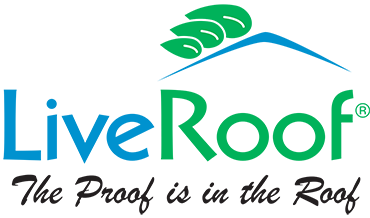
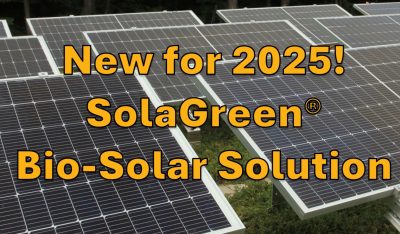
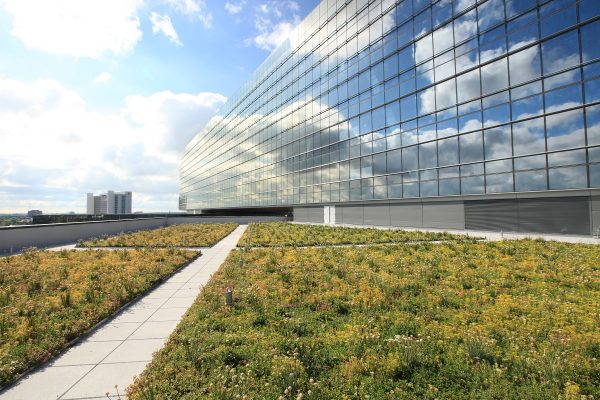
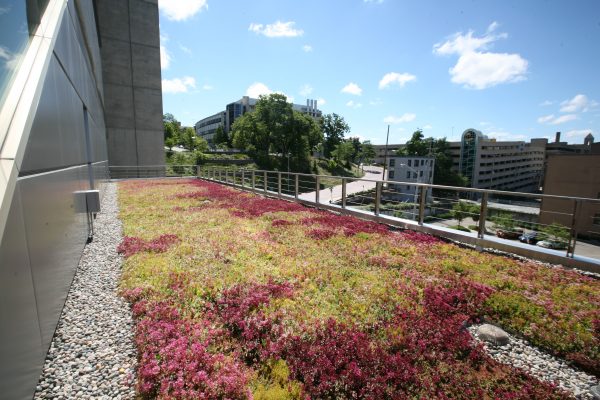
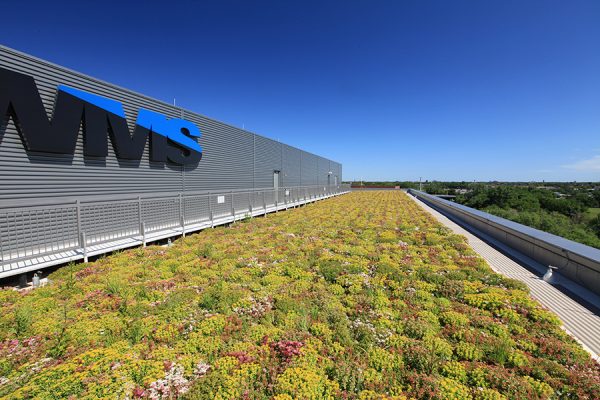
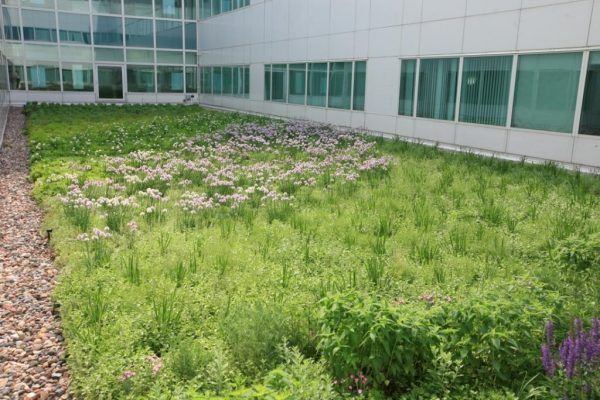
-600x400.jpg)
